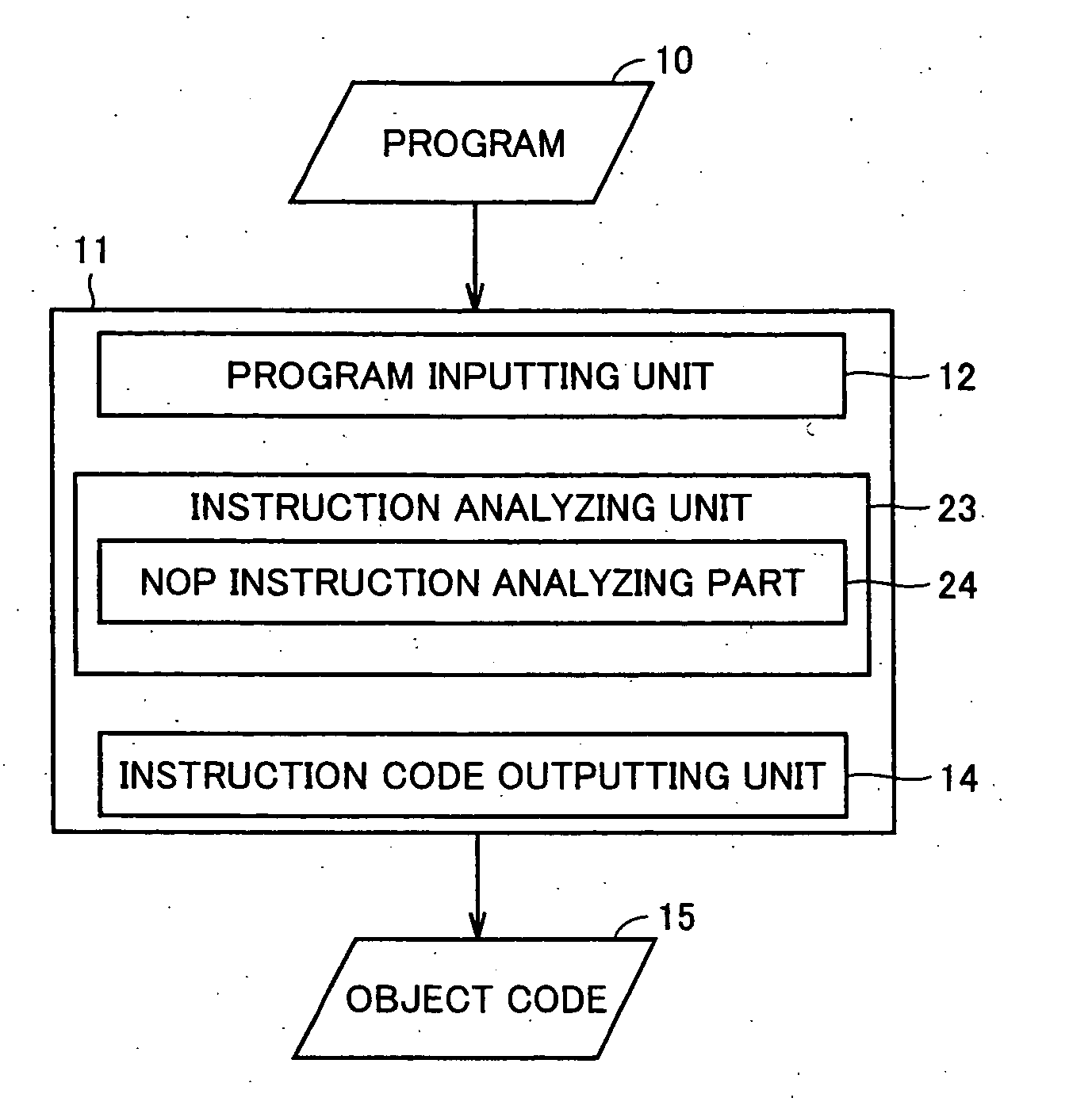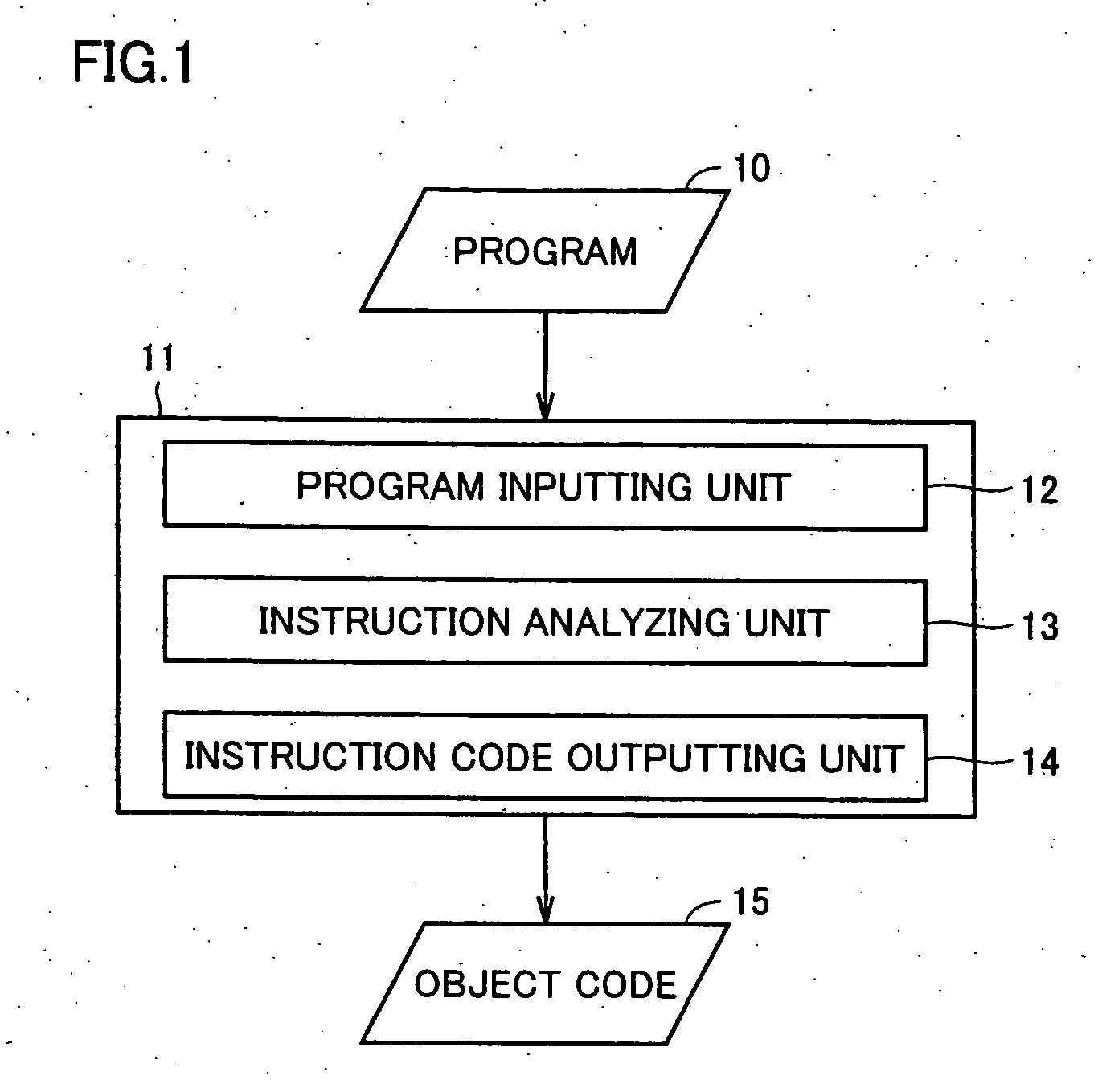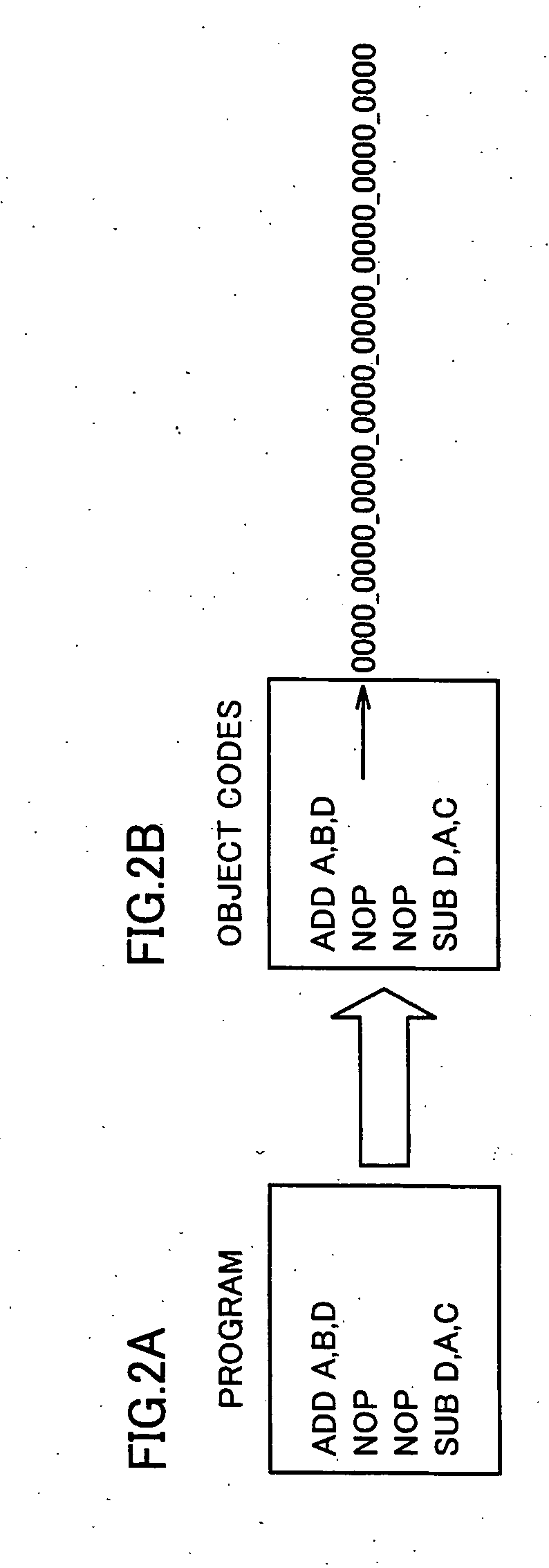Assembler capable of reducing size of object code, and processor for executing the object code
a technology of object code and processor, applied in the field of assembly capable of reducing the size of object code, can solve the problems of deterioration in performance, automatic inserting of unnecessary nop instructions, etc., and achieve the effect of reducing the size of an object cod
- Summary
- Abstract
- Description
- Claims
- Application Information
AI Technical Summary
Benefits of technology
Problems solved by technology
Method used
Image
Examples
first embodiment
[0041] First, an operation of a general assembler will be described. FIG. 1 is a block diagram showing a functional configuration of a general assembler. An assembler 111 includes a program inputting unit 12 to which a program 10 described in a mnemonic code is inputted, an instruction analyzing unit 13 for analyzing instruction codes of the program inputted to the program inputting unit 12 one by one and outputting an encoded instruction, and an instruction code outputting unit 14 for outputting the encoded instruction which is outputted from instruction analyzing unit 13 as an object code 15.
[0042]FIGS. 2A and 2B are diagrams showing an example of a program which is inputted to the assembler shown in FIG. 1, and generated object codes. When the program shown in FIG. 2A is inputted to program inputting unit 12, instruction analyzing unit 13 analyzes instructions of the program shown in FIG. 2A one by one and outputs encoded instructions. As a result, instruction code outputting un...
second embodiment
[0073] A configuration example of an assembler in a second embodiment of the present invention is similar to that of the assembler in the first embodiment of the present invention shown in FIG. 3. A functional configuration of the assembler in the second embodiment of the present invention is similar to that of the assembler in the first embodiment of the present invention shown in FIG. 4. Therefore, detailed description of the same configurations and functions will not be repeated here.
[0074]FIG. 9 is a flowchart for describing a procedure of the assembler in the second embodiment of the present invention. The procedure is different from that of the assembler in the first embodiment of the present invention shown in FIG. 5 only with respect to the point that step S3 is replaced with step S13. Therefore, detailed description of the same procedure will not be repeated here.
[0075] In step S13, NOP instruction analyzing part 24 determines whether the NOP instruction is a labeled NOP ...
third embodiment
[0086]FIG. 11 is a block diagram showing a schematic configuration of a processor in a third embodiment of the present invention. The processor includes a program address generating unit 30 for generating an address of an instruction to be fetched, an instruction fetching unit 31 for fetching an instruction in accordance with the address generated by program address generating unit 30, an instruction decoding unit 32 for decoding the instruction fetched by instruction fetching unit 31, a data reading unit 33 for reading data from a memory or a register in accordance with a result of decoding by instruction decoding unit 32, an operation processing unit 34 for performing an integer arithmetic operation, a floating point arithmetic operation and the like by using the data read by data reading unit 33 as a source, and a data writing unit 35 for writing a result of the operation performed by operation processing unit 34 into a memory or a register.
[0087] Program address generating unit...
PUM
 Login to View More
Login to View More Abstract
Description
Claims
Application Information
 Login to View More
Login to View More - R&D
- Intellectual Property
- Life Sciences
- Materials
- Tech Scout
- Unparalleled Data Quality
- Higher Quality Content
- 60% Fewer Hallucinations
Browse by: Latest US Patents, China's latest patents, Technical Efficacy Thesaurus, Application Domain, Technology Topic, Popular Technical Reports.
© 2025 PatSnap. All rights reserved.Legal|Privacy policy|Modern Slavery Act Transparency Statement|Sitemap|About US| Contact US: help@patsnap.com



